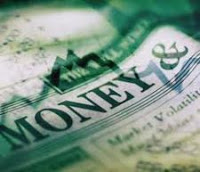India plans to join sovereign fund club
According to ET, India plans to float a sovereign wealth fund (SWF), which would potentially invest in overseas projects and companies to secure access to natural resources for one of the fastest-growing economies in the world. Corporate India may have been encouraged to suggest the formation of a sovereign fund seeing the experience of China, which has used its overseas investment vehicle, China Investment Corporation or CIC, with a corpus of over $400 billion, to buy natural resources abroad.Curretly the interest on foreign reserves like dollar, pound and euro is less than 2%. So there is no harm in allocating a small share of our reserves to buy commodities including oil, or shares of commodity companies.
Operation Twist
Operation Twist was a program executed jointly by the Federal Reserve and the freshly elected Kennedy Administration in the early 1960s to keep short-term rates unchanged and lower long-term interest rates It was intended to lower long-term interest rates (to stimulate investment) while propping up short-term interest rates (to attract capital from abroad and support the dollar).
Indian Healthcare and GDP
According to a study by World Health Organisation (WHO), India ranks 171 out of the 175 countries in the world in public health spending. Spending for healthcare in India remains minuscule. The Planning Commission said expansion of healthcare will be one of its top priorities during the 12th Five-Year Plan (2012-17) and it aims to increase spending in the sector to 2.5 per cent of the GDP from around 1 per cent at present by the end of the period
Indian's gold rush
As per World Gold Council, India's gold imports rose 60% year-on-year (YoY) during the quarter ended June 2011. Gold is now our second biggest import, behind only crude oil. when one buys gold, it either sits quietly in our lockers or becomes jewellery. In both the cases, money gets locked since gold is not a productive asset. India's household savings have shifted away from productive financial assets, declining from 12.1% of Gross Domestic Product (GDP) in 2009-10 to 9.7% in 2010-11. Gold imports have gone up nearly 50 basis points (half a percentage point) of the GDP in the last three years. This means that more and more resources are getting locked up in an asset that does not help produce anything. Effectively, it hinders economic growth to a certain extent. The other problem is that India heavily depends on gold imports as we don't produce much of it in our own ecsovereign fund clubonomy. As a result, it adds to our current account deficit.
Loan Melas for Rural India
UPA government is nudging state-run banks to dole out up to 10,000 in unsecured loans to landless labourers to boost consumption in rural areas, which bankers say reminds one of 'loan melas' of the 1980s that crippled the banking industry. Government is using state-controlled banks to improve the welfare of the rural population apart from many government-run welfare schemes such as MNREGA, a guaranteed employment programme. The slowing growth rate is making the government to use non-traditional channels to keep the economy growing since there's little room for monetary and fiscal measures. Government-owned banks due to their extensive branch network in rural India have over 80% market share in agriloan business.According to ET, in a poor country like India, where more than half the population lives on less than Rs 100 a day, welfare schemes such as these may keep the economy oiled. Also, the fleecing by money lenders makes it essential for the government to push through such schemes.
Debt crisis- some realities
According to Telegraph, the upper limit of the acceptable level of debt is 80 to 100% of GDP for governments and 90% of GDP for companies. The combined debt of the developed nations rose from 165% of GDP 30 years ago to 310% in 2010. This is 3 times the acceptable level. The world economies did not see such high levels of debt even during the wars. Add to that the facts that demographic atrophy and aging costs will make the scenario even nastier.
Inflation in India
Inflation in India has been high for quite some time now with the main culprit being rising food prices.This is because of increasingly structural food price issues and rising demand for proteins and foodgrains as a result of higher disposable incomes. And food being a significant part of the wholesale price index (WPI), rise in food prices has fueled overall inflation as well. Even amongst the BRICs India continues to struggle with the highest inflation rate in 2011. This is despite the fact that it is the only BRIC country to see lower price rises in 2011 as compared to average of 2010.
Bank Accounts of Indians
Despite having a number of banks in the country, only 47% of India's households have bank accounts. Three-fourths of this lot maintains an average quarterly balance of only Rs 5,000. Also studies report that Indian banks have the highest cost per employee at Rs 5.5 lakhs per annum.






0 comments: